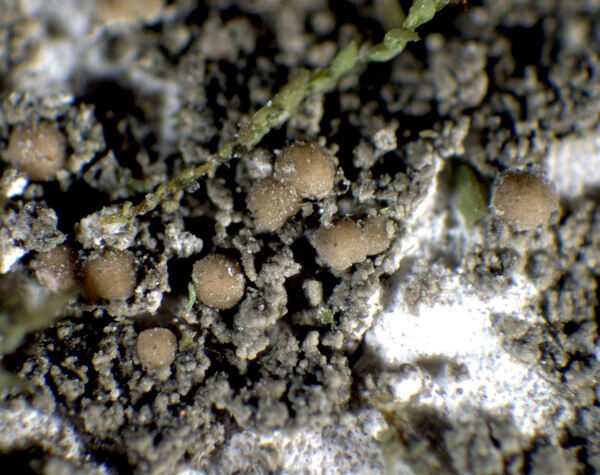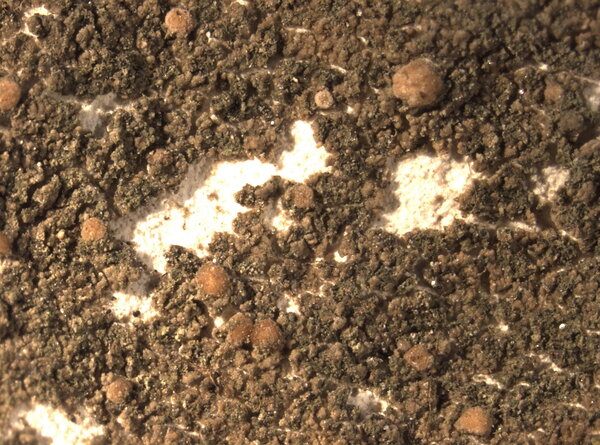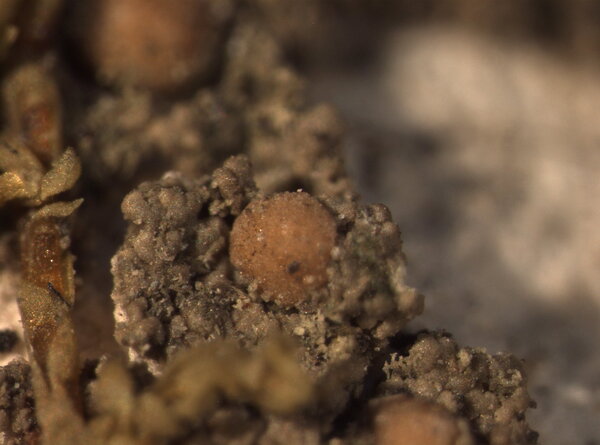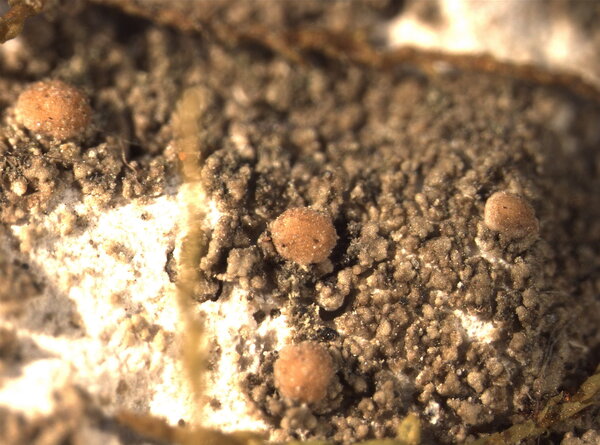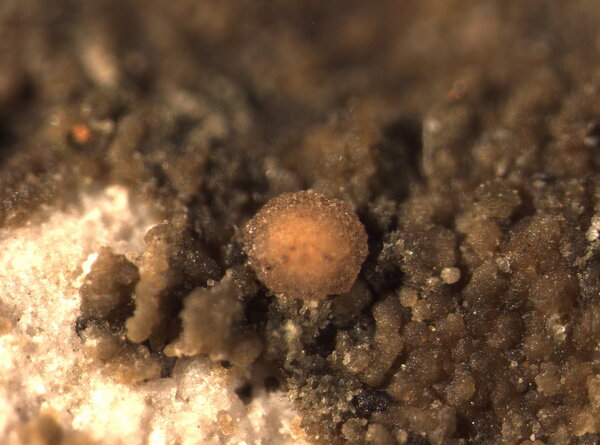Biatorella germanica Körb.
A. Massal. ex Körb., Parerga Lichenol.: 125, 1860.
Synonyms:
Distribution: N - Frl., Piem (TSB 34055).
Description: Thallus crustose, pale grey, very thin and usually inconspicuous. Apothecia biatorine, 0.4-0.6 mm across, reddish brown, not constricted at base, with a strongly convex disc, without an evident proper margin. Proper exciple poorly developed, of more or less parallel hyphae, I+ blue; epithecium pale orange-yellow, K-; hymenium colourless to pale yellow, 65-75 µm high, I+ deep blue; paraphyses richly branched and anastomosing in upper part; hypothecium pale yellowish brown to red-brown. Asci >100-spored, cylindrical to clavate, with a simple, K/I± faintly blue apical dome surrounded by weakly amyloid wall layers, Biatorella-type (see Hafellner & Casares-Porcel 1992). Ascospores 1-celled, hyaline, globose, 3.5-4.5 µm. Photobiont chlorococcoid. Spot tests: K-, C-, KC-, P-, UV-. Chemistry: without lichen substances.Note: on sheltered calcareous rocks in upland areas; perhaps overlooked, but certainly not common.
Growth form: Crustose
Substrata: rocks
Photobiont: green algae other than Trentepohlia
Reproductive strategy: mainly sexual
Commonnes-rarity: (info)
Alpine belt: absent
Subalpine belt: very rare
Oromediterranean belt: absent
Montane belt: very rare
Submediterranean belt: absent
Padanian area: absent
Humid submediterranean belt: absent
Humid mediterranean belt: absent
Dry mediterranean belt: absent

Predictive model
Herbarium samples
Growth form: Crustose
Substrata: rocks
Photobiont: green algae other than Trentepohlia
Reproductive strategy: mainly sexual
Commonnes-rarity: (info)
Alpine belt: absent
Subalpine belt: very rare
Oromediterranean belt: absent
Montane belt: very rare
Submediterranean belt: absent
Padanian area: absent
Humid submediterranean belt: absent
Humid mediterranean belt: absent
Dry mediterranean belt: absent

Predictive model
| Herbarium samples |
 DOLICHENS
DOLICHENS
